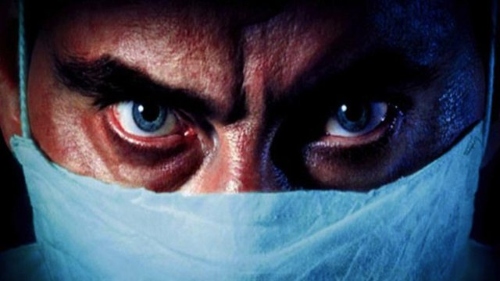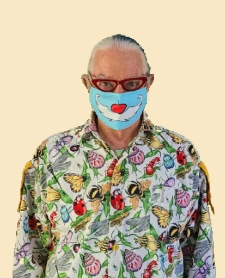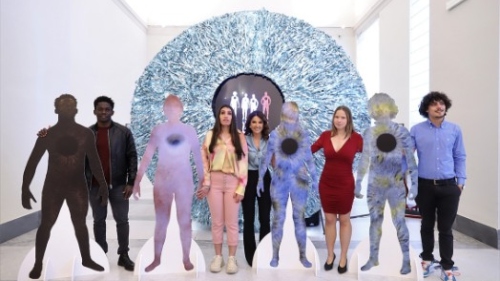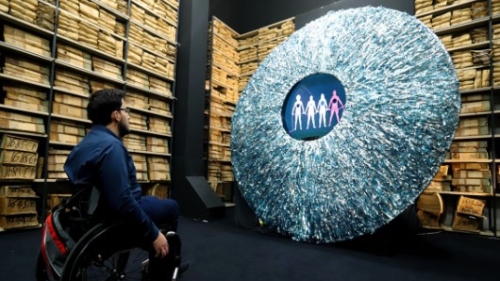
Do you remember, before the hurricanes, the war in Europe, the repeal of women’s basic health rights in America, and everything else happening, that there was a pandemic? Hollywood still does. Indeed, they may be one of the last repositories of such institutional memory.
As you read here, and other places over the weekend, Hollywood guilds and producers have agreed to extend the current Covid protocols. “The current Agreement, which was previously scheduled to expire today, Sept. 30, will remain in place until a new Agreement is reached,” read a joint statement.
Of course, there is no specific timeline for when that will be, but it represents another extension of protocols that have been in place since 2020. As TheWrap noted in their coverage, “Labor sources have told [us] that plans on when and how to phase out the Return to Work Agreement would not necessarily be tied to state and federal changes in COVID-19 protocols, and so far this is how enforcement of the measures has played out.”
This makes showbiz, then, one of the last industries with still strict(ish) pandemic protocols. Even healthcare is pulling back: “The Centers for Disease Control and Prevention no longer recommends universal masking in health care settings, unless the facilities are in areas of high COVID-19 transmission. The agency quietly issued the updates as part of an overhaul to its infection control guidance for health workers published late Friday afternoon. It marks a major departure from the agency’s previous recommendation for universal masking.”

That was at least one Friday back (depending on when you read this) but it means that ironically, your great-aunt Mildred with the respiratory condition would likely be safer if you took her to a film set than if you took her to a doctor’s office where that unmasked patient next to both of you keeps sneezing into the air.
That doesn’t mean things will stay this way forever; we’ll see how all parties in the Hollywood system come together if transmission remains low and no new variant comes storming onto the scene. The extension would also seem to serve as recognition that film and TV production works differently than other kinds of project-based work — it’s not that easy to suddenly recast, or find a new DP, or production designer, on the spur of the moment, let alone or halfway through shooting. (The “recasting” may actually be the lynchpin there, from a studio standpoint.)
So, we wait and see.
“All right then, no more masks,” wrote Stephen King way back when The Shining was still a new book. He meant it in a more horrific context, of course. But even so, acting as if the pandemic is entirely over, or never happened, is, in Shining terms, still more whistling past the graveyard — the latest that, like climate change and the collapse of democracy, etc., we all must pass daily.
But while we whistle, more and more of what was produced during the pandemic is getting released, and in some cases, winning awards — or, at least, hoping to. HBO’s The White Lotus, which shot in the Covid bubble, did quite well at the Emmys, for example. Meanwhile, following a screening of Sony’s awards contender Devotion, about African American Naval aviation pioneer Jesse Brown, one of the topics that the panel discussed was casting during Covid. Casting Director Tamara-Lee Notcutt revealed that the film’s recent Toronto screening was the first time she’d seen many of the actors in person, while Director J.D. Dillard talked about the bubble-y aspects of shooting in Georgia, busily doubling for Rhode Island, France, and other locales.

Such “virus on my mind” concerns have affected (we don’t dare say “infected”) other award-hopefuls, as well. We recently had a Zoom chat with Annalaura di Luggo, an Italian multimedia artist behind the documentary We Are Art – Through the Eyes of Annalaura, filmed in Naples, Italy, as she creates the Colloculi, a multimedia installation created, from recycled aluminum, in the shape of a Giant Eye, replete with interior ocular structure.
“Seeing better,” with eyes-as-literal-metaphor, has been a theme of western art since the blinding of Oedipus. In this case, though, the “seeing” isn’t a penance, but rather an act of liberation for the four young people chosen as the main subjects/fulcrums for the doc, each dealing with various “blinders” or inhibitors in their lives stemming from disabilities, perceived or otherwise, such as parental abandonment, immigrant struggles, or in one instance, literal blindness (though the young blind woman, Noemi Marano, also seemed very at ease with herself).
Luggo also incorporates images of the quartet’s actual eyes into the artwork through macro photography, so that in this case, it is not so much the abyss, but a certain longed-for hope that gazes back.
“I started during Covid,” she said of the one-year project. “I had already worked with recycled aluminum, and thought it was a moment also to give a message of recycling light,” playing off the phonetic (and perhaps etymological) pun that the metal’s name already contains: “lumin.”
The pandemic itself remained “a big inspiration” for the work, particularly in the way social distancing was keeping people apart, she said.

As for the practicalities of keeping everyone safe during the project (for indeed, it wasn’t only the shoot, but the creation of the artwork itself, the recording of the autobiographical narratives, and more), Stanley Isaacs, who served as both Creative Advisor and Production Supervisor for the film, mentioned that not only did they travel with a small crew to their locations, but everyone was “tested multiple times during the week.”
There was also “a nurse on set all the time,” plus a cardiologist and a psychiatrist. In the latter two instances, this wasn’t necessarily due only to the virus — both played a role in helping the four leads better define their own emotional (and physical) states as each looked inward. In one case this lead to the discovery that the addicted mother of one of the young men had attempted suicide before that day’s shoot.
“I gotta hand it to him,” Isaacs says. “He’s a remarkable young man. I know he’s gone through a complete catharsis (since then, though now he) recognizes he has value.” And “what he’s lost,” in family, he’s hopefully regained in friends, Isaacs said, as he, Luggo, and their four leads still regularly keep in touch.
It might almost be a metaphor for emerging from pandemics and other catastrophes: Who is still there with you? Who’s survived alongside you?
And having survived, how does one begin living again once more?
As for We Are Art, it’s making the screening rounds and hoping for a nod in both the documentary and original song categories. But in times like these, even awaiting nominations in January feels like that’s almost too far to see — from either an ocular or an oracular vantage point – into our collective futures.
We will, at least, see you back here next week.
 Mark London Williams is a BTL alum who currently covers Hollywood, its contents and discontents, in his recurring “Across the Pond” dispatch for British Cinematographer magazine, contributes to other showbiz and production-minded sites, and musters out the occasional zombie, pandemic-themed, or demon-tinged book and script, causing an increased blurring in terms of what still feels like “fiction.”
Mark London Williams is a BTL alum who currently covers Hollywood, its contents and discontents, in his recurring “Across the Pond” dispatch for British Cinematographer magazine, contributes to other showbiz and production-minded sites, and musters out the occasional zombie, pandemic-themed, or demon-tinged book and script, causing an increased blurring in terms of what still feels like “fiction.”
Mark London Williams’ Union Roundup column will appear every Tuesday. You can reach him to give him tips and feedback at [email protected]. He can also be found on Twitter @TricksterInk.





